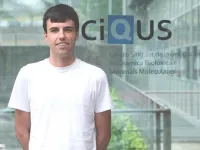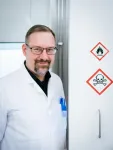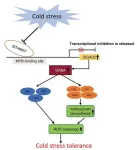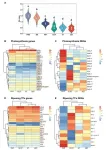(Press-News.org) New research highlights the challenge of balancing the risks of overdiagnosing and underdiagnosing prostate cancer early enough to intervene and minimize risk of death. Recently, some experts have called for the lowest grade of prostate cancer—biopsy Gleason Grade Group (GGG) 1—to be reclassified as ‘benign.’ But a new study led by a researcher from Mass General Brigham has found that many patients with a biopsy GGG1 may have a more aggressive cancer than their biopsy alone suggests.
By looking at data from more than 10,000 patients at a university in Germany, researchers found that at least 8 percent of patients with this classification had a more aggressive form of prostate cancer. They also found that many of the patients with GGG1 who are at highest risk can be identified based on high PSA levels or 50 percent or more of their biopsy samples coming back positive. Maintaining a “cancer” classification for these higher risk patients could improve their treatment plan and minimize risk of death. Results are published in European Urology Oncology.
“Our study identifies two risk factors that help determine which patients with GGG1 are at heightened risk of aggressive disease and death,” said senior author Anthony D’Amico, MD, PhD, of the Department of Radiation Oncology at Brigham and Women’s Hospital, a founding member of the Mass General Brigham healthcare system. “For patients with GGG1 who are at heightened risk, we should continue to call their diagnosis cancer and we should report it back to their physician so that they can act on this information. For patients with GGG1 who do not have either of these risk factors, the chance of dying is much lower. But for clinicians caring for patients at greatest risk, our message is clear: Call it cancer, and look harder.”
D'Amico collaborated with colleagues from University Hospital Hamburg Eppendorf to analyze data from 10,228 patients with GGG1 prostate cancer who underwent radical prostatectomy (surgical removal of the prostate) at the university hospital in Germany. Of these patients, 9,249 were diagnosed based on transrectal ultrasound (TRUS)-guided biopsies, and 980 were diagnosed using a more modern approach that combines TRUS with MRI to detect prostate cancer more accurately. The study began enrolling patients in February 1992 and continued following them through November 2023.
Of the 10,228 patients in the study cohort, adverse pathology—that is, a higher-grade Gleason Group Score or positive pelvic lymph nodes—at the time of radical prostatectomy was found in 955 of 9,248 patients diagnosed using TRUS (10.33 percent) and 77 of 980 patients diagnosed using the combined biopsy approach (7.86 percent). About 6 percent of patients with GGG1 had a PSA level of 20 ng/ml or more and about 12-14 percent of patients with GGG1 had more than half of their systematic biopsies return a positive result. Patients with either of these indicators had a significantly elevated risk of adverse pathology, increased risk for early PSA failure, and risk of death.
The authors note potential limitations to their study, including that the study population is from a single institution, PSA levels prior to diagnosis were not available, and most patients had samples collected and diagnosed before combined biopsy became widely adopted and diagnostic guidelines were updated in 2014. However, researchers found the same result for what predicts increased risk of adverse pathology and early recurrence (within 18 months) despite taking the prostate out in patients diagnosed with both approaches.
D’Amico notes that for patients with GGG1 who have one or both indicators of heightened risk, there are steps that clinicians can take, such as doing a follow-up biopsy sooner or recommending genomic testing, to assess if aggressive prostate cancer is present but missed on initial biopsy so as to intervene earlier to minimize risk of aggressive disease and death/
“Physicians and patients can have an informed discussion about whether observation, active surveillance or treatment is the right approach,” he said. “But if all patients with GGG1 are labeled ‘benign,’ it may preclude those conversations from happening.”
Authorship: D’Amico’s co-authors on the paper include Derya Tilki, Ming-Hui Chen, Hartwig Huland, and Markus Graefen.
Paper cited: Tilki D et al. “Mortality Risk in patients with Biopsy Gleason Grade Group 1 Prostate Cancer” European Urology Oncology DOI: 10.1016/j.euo.2024.06.009
###
About Mass General Brigham
Mass General Brigham is an integrated academic health care system, uniting great minds to solve the hardest problems in medicine for our communities and the world. Mass General Brigham connects a full continuum of care across a system of academic medical centers, community and specialty hospitals, a health insurance plan, physician networks, community health centers, home care, and long-term care services. Mass General Brigham is a nonprofit organization committed to patient care, research, teaching, and service to the community. In addition, Mass General Brigham is one of the nation’s leading biomedical research organizations with several Harvard Medical School teaching hospitals. For more information, please visit massgeneralbrigham.org.
END
The Royal Spanish Society of Chemistry (RSEQ) and Lilly have announced the winning theses of the 22nd Research Awards for Doctoral Students, which acknowledge outstanding work in the fields of Organic, Pharmaceutical, and Analytical Chemistry. Marcos Vilela, currently pursuing his PhD at the Center for Research in Biological Chemistry and Molecular Materials (CiQUS) at the University of Santiago de Compostela (USC), was awarded alongside Andrea Palone from the University of Girona (UdG) and the University of Rome "Tor Vergata," and Beatriz Arévalo from the Complutense University of Madrid (UCM).
Marcos' thesis, supervised by CiQUS Principal ...
PULLMAN, Wash. – While not yet on the market, fully autonomous vehicles are promoted as a way to make road travel dramatically safer, but a recent study found that knowing more about them did not improve people’s perception of their risk. They needed to have more trust in them too.
This study adds to the evidence from other research that knowledge alone is not enough to sway people’s attitudes toward complex technology and science, such as gene editing or climate change. In this case, Washington State University researchers found that trust in the autonomous vehicles’ reliability and performance played the strongest role in improving ...
The ability to recognise and respond to emotionally-charged situations is essential to a species’ evolutionary success. A new study published today [July 9th] in Nature Communications advances our understanding of how the brain responds to emotionally charged objects and scenes.
The research, led by Trinity College Dublin neuroscientist Prof. Sonia Bishop and Google researcher Samy Abdel-Ghaffar while he was a PhD student in Prof. Bishop's lab at UC Berkeley, has identified how the brain represents different categories of emotional stimuli in a way that allows for ...
New research led by UCLA Health has found a drug that treats insomnia works to prevent the addictive effects of the morphine opioids in mice while still providing effective pain relief.
The study, published in the journal Nature Mental Health, concluded that suvorexant, which blocks brain receptors for a neurotransmitter called hypocretin, prevents opioid addiction. At high doses in humans, suvorexant induces sleep and is used to treat insomnia. But sleep was not induced, and behavioral alertness was maintained, at the much lower doses effective in preventing ...
Many women treated for breast cancer using taxanes, a type of cytostatic drug, often experience side effects in the nervous system. Researchers at Linköping University have developed a tool that can predict the risk level for each individual. The tool could help doctors adapt treatment to avoid persistent side effects in those at the greatest risk.
More and more people are becoming cancer survivors. But even if they have survived the disease, an increasing number still suffer from the side effects of cancer treatment. In a recent study from Linköping University, researchers studied the side effects of taxanes, ...
For those living in cities, space to play sports outside can be a scarcity. Recently, natural grass in parks or public sports courts has often been replaced with more durable artificial turf to allow heavy consecutive use.
There are, however, downsides to this practice, both for people and for cities as a whole. Now, scientists in the Netherlands have set out to change that by integrating a subsurface water storage and capillary irrigation system under artificial turf sports fields.
“Here we show that including a subsurface water storage and capillary ...
Plants are known to respond to seasonal changes by budding, leafing, and flowering. As climate change stands to shift these so-called phenological stages in the life cycle of plants, access to data about phenological changes – from many different locations and in different plants – can be used to draw conclusions about the actual effects of climate change. However, conducting such analyses require a large amount of data and data collection of this scale would be unthinkable without the help of citizen scientists. “The problem is that the quality of the data suffers when fewer people engage ...
In a significant advancement for agricultural biotechnology, researchers have identified a genetic mechanism that enhances the cold tolerance of tomatoes. This breakthrough is pivotal for cultivating crops in cooler climates, ensuring stable yields and bolstering global food security. The study focuses on the SlGAD2 gene, which, when overexpressed, elevates the plant's γ-aminobutyric acid (GABA) levels, boosts antioxidant activities, and stimulates anthocyanin production, collectively improving cold resilience.
Tomatoes play a vital role in global agriculture but are susceptible ...
A new approach to treating the most malignant type of brain cancer – glioblastoma – has shown strong promise in pre-clinical settings, raising hopes of increasing current average survival rates beyond 18 months.
Targeted alpha therapy (TAT) is emerging as a potential additional treatment for glioblastoma (GB), a disease which has confounded oncologists for decades due to its aggressive nature and strong resistance to existing therapies.
The current standard treatment for GB is surgery, followed by external beam radiotherapy and the chemotherapy drug, temozolomide. However, survival rates of less than 5-10% at five years have prompted researchers to explore ...
Tomato fruit ripening, a process initiated by key gene demethylation, is significantly influenced by postharvest handling practices. These practices, while extending shelf life, can alter ripening dynamics and affect fruit quality. This study explores the impact of various postharvest treatments on the fruit's methylome and transcriptome, shedding light on how physiological and molecular changes interplay to determine the final quality of tomatoes.
Postharvest handling practices, such as refrigeration and modified atmosphere storage, are commonly used to extend the shelf life of tomatoes. However, these methods can negatively impact fruit quality, ...





